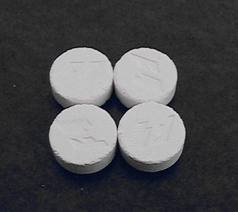
The amphetamine speed is actually a “slang” name for the entire class of drugs known as amphetamines. All amphetamines, whether legal or illegal, activate chemical processes throughout the brain and body and so “speed up” most every bodily function.
Amphetamine speed effects can cause serious damage to brain and body processes when used over long periods of time. The brain, in particular undergoes considerable strain with each successive dose of the drug.
As this class of drugs carries a high potential for abuse and addiction, amphetamine speed effects essentially trap users in a cycle of compulsive drug use. Without needed treatment help, users stand the risk of developing permanent brain damage from amphetamine speed effects.
Amphetamines
As synthetically made drugs, amphetamines consist of three primary substance types:
- Amphetamine
- Dextroamphetamine
- Methamphetamine
Different combinations of each substance or varying strengths of each substance can produce certain desired treatment effects. Prescription amphetamines are used to treat various conditions, some of which include:
- Parkinson’s disease
- ADD/ADHD
- Narcolepsy
- Obesity
People affected by these conditions have brain chemical imbalances that can benefit from the effects of amphetamine drugs. Some of the more commonly prescribed amphetamine drugs include:
- Strattera
- Adderall
- Ritalin
People who take amphetamines for recreational purposes open themselves up to amphetamine speed effects and the subsequent damage these drugs can cause. According to the University of Maryland, amphetamine speed effects typically take the form of:
- Increase in body temperature
- Increased heart rate
- Talkativeness
- Increase in blood pressure
- Increase in breathing rate
- Headaches
- Hyperactive behavior
- Aggressive tendencies
- Impulsiveness
- Feelings of power or invincibility
Amphetamine Speed Effects in the Brain

Speed is an amphetamine based street drug.
When ingested, amphetamines target the brain cells that produce dopamine and norepinephrine neurotransmitter chemicals. These chemicals play a vital role in regulating central nervous system processes.
In effect, these drugs stimulate chemical secretions at key brain cell receptor sites while preventing cell sites from reabsorbing or recycling excess dopamine amounts. These processes account for the effects users experience when taking these drugs.
With ongoing use, amphetamines over-exert brain cell sites to the point where they start to weaken in overall effectiveness. Over time, the brain comes to rely on amphetamine effects to stimulate dopamine secretions on an ongoing basis.
At this point, users start to experience any number of symptoms, commonly known as withdrawal effects. Withdrawal effects may take the form of:
- Angry outbursts
- Loss of appetite
- Restlessness
- Inability to concentrate
- Confused thinking processes
- Sweating
- Problems sleeping
Abuse Potential
Amphetamine speed effects carry a high abuse potential due to the damage these drugs cause to vital brain structures. In general, amphetamines produce a short-term “high” that recreational users try to maintain by taking larger doses at frequent intervals. Also known as bingeing, these practices weaken brain cell functions at an exponential rate.
The weaker brain cells get the larger the dose needed to produce the desired effect. These interactions between amphetamines and the brain make for a dangerous abuse potential that greatly increases the likelihood of addiction.


